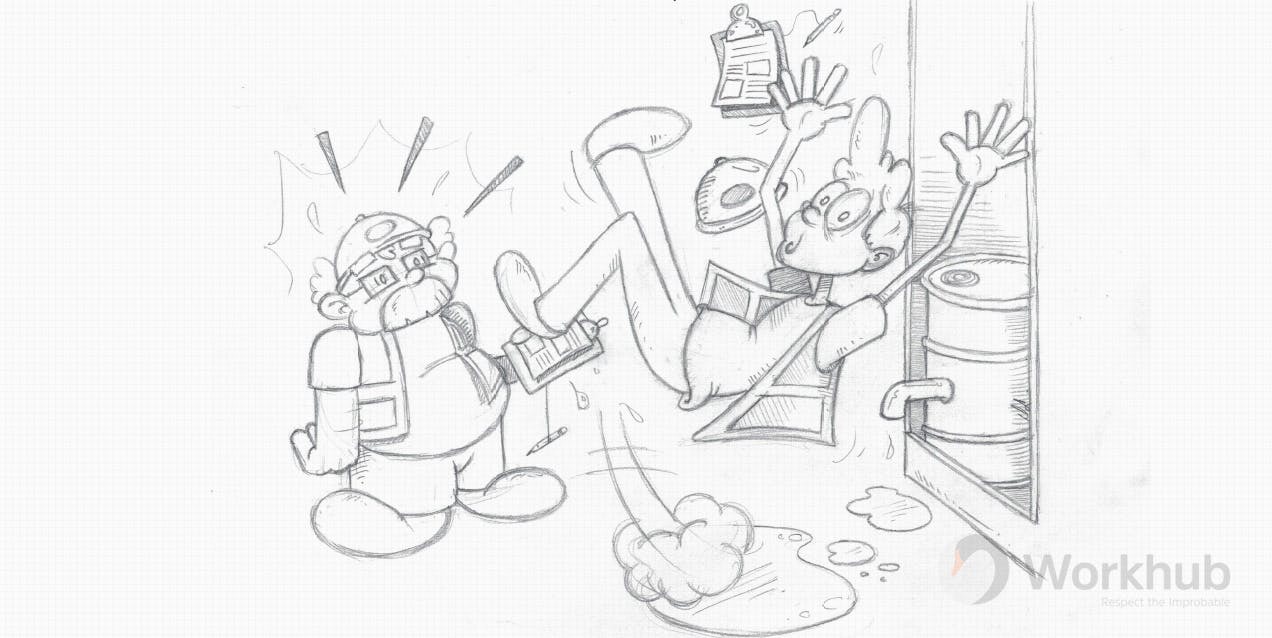Safety Inspections – Where Do I Start?
Workplace inspections are one of the many ways to prevent incidents, injuries, and illnesses. Even though we all know health and safety are essential, as much as we’d all love to say the first thing we think about is safety when on the job, sometimes it’s not. By being proactive and continuously inspecting workplace elements to ensure hazards are identified and dealt with accordingly, you maintain the highest of safety standards – and avoid any of those slip-ups.

What am I looking for?
Hazards! All types of them!
OSHA conveniently identifies the types of hazards you need to look out for when creating and carrying out inspections.
Safety Hazards: checking on machinery, workplace conditions, workers’ safety practices, housekeeping of location, etc. Having an inventory of the equipment present will make this process much easier.
Biological Hazards: anything that can cause your workers illnesses such as viruses, bacteria, parasites, etc.
Chemical Hazards: any hazardous liquids, gas, dust, fumes, or waste.
Ergonomic Hazards: physical and psychological demands on your workers such as forceful movements, repetitive movements, or awkward postures. Ensuring workers are equipped with the proper training, tools, and equipment is needed for their protection.
Physical Hazards: noise, extreme weather conditions, radiation, high or low pressure, vibrations, etc.
Psychological Hazards: anything that may affect the mental or physical well-being of your workers whether that be any trauma related to the job, overworking, stress, etc.
It is important to note that as work progresses, and projects proceed, hazards evolve and change. Some disappear, and some appear. That’s why your inspection forms need to be evaluated weekly, if not daily, to keep up with your evolving work environment.
Keep track of your inspections.
Examine your workplace and tools, create checklists and record using Workhub’s Inspections Tool.
How Do I Actually Carry Out the Inspections?
Have a Plan
Review each individual’s responsibilities before conducting the inspections. Assigning different areas and routes will help each team member understand where they’re are going and what they’re doing.
Checklists. Checklists. Checklists.
A checklist will not only keep you organized and highlight the inspection responsibilities for each type of hazard, but it will also provide a place to document and report findings and comments on hazards.
Assign an Inspection Team
Strap your team with workers who are experienced, knowledgeable of procedures, and familiar with the types of hazards present at your worksite.
Create a Schedule
Your goal is to maintain a safe environment. Determine how often it is appropriate to inspect each area of your worksite based on past incidents, size of location and work operations, number of shifts, nature of hazards present, etc.
Forms and Records
Having forms to conduct the inspections with will allow you to keep records of previous inspections, check for any changes needed, and ensure compliance throughout your project. Ensure your inspection teams understand that they must document their findings after each item listed on the form.
Corrective Action
If hazards have been identified, the next step is taking action! Ensure your inspection team understands the protocol on how to deal with hazards once identified and how to proceed with corrective action where applicable. Assign priority levels to hazards in order to determine the urgency of corrective action required.
Checking Work Practices
Inspections aren’t only about your physical environment, it’s also about ensuring safety compliance from your workers. Allow your inspection team to observe for poor work practices amongst your crew. Examples of poor work practices include: operating machinery without proper PPE and operating tools or machinery without proper supervision.
Keeping track of all this can be difficult. Checklists, forms, different templates for different sites, it’s a lot. Opt for a safety compliance software to centralize all your documents and simplify keeping track of your workers and safety initiatives. Workhub’s Inspections Tool will record, track, and analyze inspections in your worksites all in one convenient place.
Workhub provides a complete health and safety compliance software that allows easy management of training, procedures, policies, inspections, and more, centralized in one easy-to-use hub.
Still have questions?
Let our knowledgeable sales team give you a full product tour and answer any specific questions you may have.
Workhub Internal